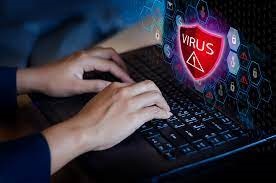How do I remove a virus and malware from my computer?Computer virus: A type of malware (malicious software) is a computer virus which is created to self-replicate or create copies of itself on any disc attached to your computer. Computer viruses may have the potential to replicate themselves, just like real viruses, which is how they got their name. This is how a computer virus spreads once it has already infected your system. Your computer may become slower and cease functioning properly when a virus attacks it. Malware and viruses are programs that can cause several issues on a computer in many different ways. If it seems that malware or virus has infected your system, go through the instructions below in order to get help and advice on quarantining or eliminating the infection from your computer device. 
Virus detection and removalOn your computer, if you are using any storage device, such as a USB flash drive, and you find it is infected with the virus, you can run an antivirus scan on the computer to remove the infection in this condition. Run a full system scan in your antivirus program from the Start menu or the Windows notification area to check all of the files on your computer for viruses. Note: Usually, the antivirus program only scans the computer's main hard disk by default and does not scan additional storage devices like USB flash drives. In this case, you need to check the settings in your antivirus program to ensure that it is configured to check all drives that are attached to the computer.If you are facing a problem booting Windows, restart the PC in Safe Mode and scan your system from Safe Mode.
If you don't have an antivirus program installed on the computer. Tip You may utilize Windows Defender as your antivirus program if your system has Windows 8, Windows 10, or Windows 11. If your system does not have Windows Defender or antivirus software but you still think a file is infected with a virus, attempt to run an online virus scan on your system. These websites have the potential to check the hard drive of your computer for viruses. Note: If you suspect your system has a virus, we don't advise manually locating and deleting files on your computer system. Your computer may experience difficulties or lose its ability to function if you delete the wrong files.No virus is detected: Unfortunately, a lot of problems that are not virus-related are frequently blamed on them. Nine times out of ten, a computer issue is almost often a software, driver, or hardware-related one rather than a virus. When you run the antivirus, and no viruses are discovered on your system, it is quite likely that the system is virus-free. Consider conducting an internet virus check and running the computer through a malware protection program, as indicated below, if you still think your computer is compromised in any way. Malware, spyware, and adware detection and removalIn addition to virus protection, some antivirus applications, such as Webroot SecureAnywhere, provide malware protection. We strictly advise you must use malware protection software like Malwarebytes if your antivirus software does not have malware protection capability. Malware is capable of causing many issues with computers. How to scan the computer or get software if the Internet is not workingFollow the instructions below in order to install a protection program on your system if your system does not have Internet connection:
Removing a computer virus from a MacIf you are a Mac user, you may believe that viruses cannot infect your computer or that your computer cannot get a virus. Unfortunately, you are under a false impression. Viruses that target Macs are less prevalent as compared to those that target PCs, although they do exist. Some Mac viruses are developed with the intention of deceiving people into believing they are antivirus programs. Unintentionally if you download one of them, it could infect your computer system. The viruses "MacDefender," "MacProtector," and "MacSecurity" are three examples of this category that affect Mac computers. There are six instructions given below, follow them if you have suspected your Mac has a virus:
If you don't have already installed an antivirus program, think about installing and running an anti-virus solution to make sure nothing is missed and to keep your Mac safe. Internet security programs like Kaspersky Total Security may be the best solution for you. Can your computer become infected with a virus via email?Yes, through email, your computer can become infected with a virus, but only if the recipient opens the attachments or clicks on the links in the spam email. Your system will not become infected only by receiving spam emails. Simply designate these as garbage or spam and make sure they are removed. The majority of email providers (like Gmail) will automate this, but if any get past the system, simply flag them as spam yourself and don't open them to prevent your computer becomes infected with the virus.
Next Topic#
|
 For Videos Join Our Youtube Channel: Join Now
For Videos Join Our Youtube Channel: Join Now
Feedback
- Send your Feedback to [email protected]
Help Others, Please Share










